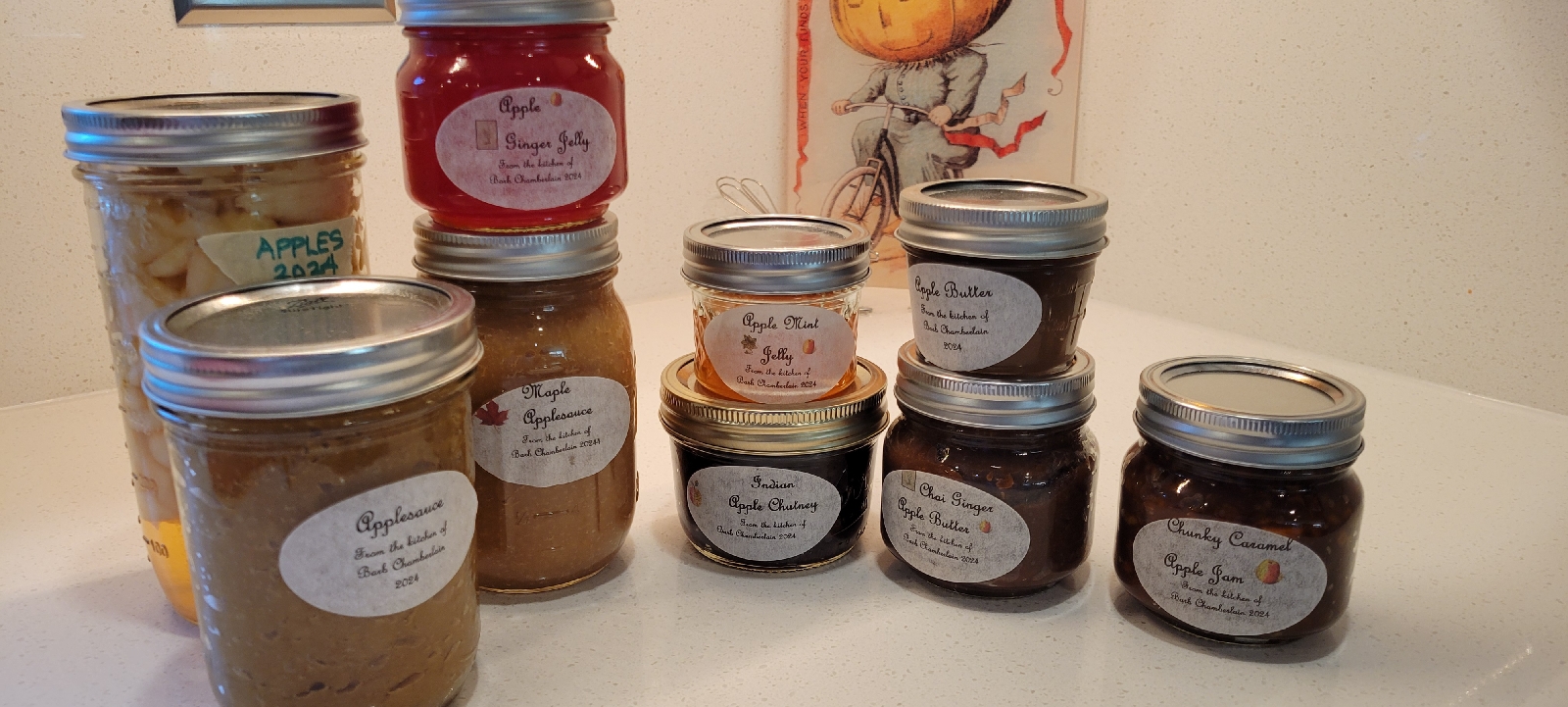This year started off wonderfully with family time on a visit with my younger sister and her partner, who live in Friday Harbor. Back from that refreshing break, I shifted into high gear for the legislative session, which always brings work with tight timelines that requires some deep thought for bill analysis. I love that part of my job so that's not a complaint, simply a reality. My sweetheart and I celebrated our 17th date-a-versary (anniversary of our first date), which happens to fall on the wedding anniversary of my parents. They were married for 68 years so I consider that fortuitous.
In late December 2023 I spent some time writing blog posts and setting them up to publish over the course of January so I could get off to a good start. Having some kind of recurring theme keeps me in the writing habit and for this year I took a run at having a round-up each month of poems about that month. I'll list the top 10 posts of the year below and we'll both know whether poetry draws as many readers as recipes.
January: Started the year off with A Year of Poems: January. Last year I wrote about my Grandma Humphrey's rocker and how I hoped to give it a new life; a local furniture pro took it on and gave me The Rocker, Refinished. Over on Bike Style I did my final post that revisited old posts with Riding Down Memory Lane: January. I didn't rely solely on those pre-planned posts, though; I captured a sunny-day ride to testify to the Senate Transportation Committee in First Ride of 2024. Slow Down captured some thoughts I've come to with time, age, and insight into what works for me. Reruns: January Posts Worth Revisiting was another version of reviewing old posts, both from this blog and from Bike Style.
Unfortunately, ride #2 of 2024 didn't end with me as happy as I'd felt from ride #1. A crash on my bike thanks to black ice in a shady spot resulted in a sprained knee and the ensuing thoughts, Thank Heavens for Kind Strangers and Transit.
We spent the first 2-1/2 months living in a couple of different rentals while remodeling work continued on our house. Before my crash this meant walks to the park from a different starting point, a new perspective.
February: Then it was time for A Year of Poems; February. Time sidelined on the sofa icing my sprained knee meant time to read through old drafts and decide if I wanted to finish any. That brought me back to Shared Streets: A Vision, based on a post I wrote years ago when we lived in Spokane. The transit story continued with my experience getting to a meeting in No Thanks to No Sidewalks! Time for another visit to the archives with Reruns: February Posts Worth Revisiting. My habit of collecting poems on various themes as I encounter them set me up to publish How We Get Where We're Going: Transportation Poems, the latest in a growing collection of poems about transportation over on Bike Style Life. Anyone who works with me knows I pay a lot of attention to the words we use. That led me to write Seeing and other Ways of Knowing, to prompt reexamination of common metaphors.
March: As a word lover of course I own plenty of bike books; I've published a couple of lists of recommendations over on Bike Style and added another one in celebration of Women's History Month in March, Bike Books I Recommend: Women on Wheels. Even more word-nerd love thanks to my poetry reading came out in A Year of Poems: March. My trips down memory lane continued in Reruns: March Posts Worth Revisiting. March also brought A Thrilling Night when I received the Woman of the Year award from the Puget Sound chapter of WTS (Women in Transportation Seminar) International; such a joy to be there with my team and many colleagues! I take a run at #30DaysOfBiking more often than not and I've found some public accountability via social media helps me stick with it so I wrote Just Ride. Every Day. It's That Simple.
A huge milestone: The remodeling of our kitchen and laundry and a bunch of other elements of the house wrapped up at last and we moved back in. It's wonderful! This is the last house we intend to buy and we're making it ours.
April: The first day of April brought not one but two posts on poetry, no foolin': A Year of Poems: April and Celebrate National Poetry Month. I celebrated the general niceness of people I encounter while riding my bike in Go Ahead, Make My Day and went back to more past posts in Reruns: April Posts Worth Revisiting. I celebrated Earth Day two ways: Earth Day Market Ride 2024 and Earth Day Poems for Every Day. And I quite happily wrapped up a successful biking April, as I described in How #30DaysOfBiking Rolled in 2024.
May: May is Bike Everywhere Month, which strangely I ended up not writing about directly as a thing to pay attention to. Maybe next year; after all, it does get plenty of national press. I added to my poetry collection with A Year of Poems: May and again rode down memory lane in Reruns: May Posts Worth Revisiting. While not a post about Bike Everywhere Month, Bike/Life Lessons Learned does share some reflections on what riding a bike has meant to me.
I got to attend the WTS International conference since I'd won the chapter award. Hehe in New Orleans, it was a fantastic exodus: seeing so many smart, talented women transportation professionals in one room.

June: June got rolling with A Year of Poems: June and another collection over on Bike Style, Still Walking, More Poetry. Seems to me just about any topic can lend itself to a poetry collection if you're so inclined, and I'm inclined. I have plenty more collections started that will appear someday in the future when I feel as if I have enough to make it worth hitting Publish. My trips down Blog Memory Lane continued with Reruns: June Posts Worth Revisiting. In an echo of my posts for winter solstice in 2022 and 2023, I wrote Summer Solstice Readings to mark that longest day of the year in the Northern Hemisphere. I decided one of my older posts was worth a refresh and updated If Electric Hand Dryers Were Bicycles.
I made it to Spokane for a celebration of another section of the Children of the Sun Trail being completed. My WSDOT colleagues, city leaders and the neighborhood celebrated with poetry, music, and of course riding along the trail.
July: A Year of Poems: July opened the seventh month of the year. After fielding a request from one of my daughters to share our family's beloved bran muffin recipe with a friend, I realized I couldn't find an online version of the recipe I have committed to memory thanks to so many batches over the years so I put it out there for others to find in Classic All-Bran/Bran Buds Muffin Recipe: Best Bran Muffins Ever. I wrapped up my visits to the past with Reruns: July Posts Worth Revisiting.
In July I got to travel to Baltimore for a conference and heard the wonderful Veronica Davis speak, the author of Inclusive Transportation*. I added on a weekend with one of my brothers and his wife and we had a great couple of days of exploring museums and riding a small ferry around the Inner Harbor. If you ever go to Baltimore, know that the Museum of Visionary Arts is well worth the visit and they have a fabulous art museum. I appreciated the easy light rail connection from the airport and transit around town.
August: By now you can guess that A Year of Poems: August published the first day of that month. I had enough gardening chores and other activities beyond work that this was the only post for August. Sometime in late July or August my Bike Style blog went down. With all I had going on it was going to take a while to work through the technical issues and restore it so I let it go for a while.
September: A Year of Poems: September led into a busy month of harvesting and preserving—so much preserving that I ended up with highly painful hand cramps at one point from all the slicing, dicing, peeling, coring, prepping, lifting and toting. I captured my various searches for recipes in a series of posts that tell you what I did every weekend: Future Marmalade, Pears, Pears, Pears!, Tomatoes, Tomatoes, Tomatoes!, Zucchini Tomato Salsa (Everyone Needs Salsa, or, What to Do with a Really Giant Zucchini), and Apples, Apples, Apples!. When I created my own version of a recipe I included it in the post along with links to the ones I made or was inspired by. This way next year after all those chutneys have had a chance to mellow and I find out which ones really turned out great I can repeat the winners and tweak the also-rans.
I also got the chance to return to my former hometown of Spokane for a conference and go on walking and biking tours of sons of the wonderful additions to the local networks.
October: A Year of Poems: October took me into fall. The gardening and harvesting work wasn't quite done and I shared some inspiration in Keep It Growing: Poems about Gardening. As the nights got colder and the days got shorter I finally gave in and dealt with Green Tomatoes. So Many Green Tomatoes.
- Spokane Blogs: Help Build the List (2010). Note that I haven't maintained this list in over a dozen years since I moved away from Spokane. It's the power of lists on the internet at work, and older posts build up more Google-Juice.
- Is there such a thing as a lowercase Nazi? (2012). This one is a reflection on the power of words, inspired in part by "Seinfeld" and in part by my time representing the legislative district that housed neo-Nazis for a while.
- Classic All-Bran/Bran Buds Muffin Recipe: Best Bran Muffins Ever (2024). Glad to find this delicious recipe, a family tradition, near the top of the charts.
- I'm part Dutch, you know: What do YOU wear to bike? (2010). One of the shortest posts I've ever written, and an example of the kind of writing that led to me starting a whole separate bike blog.
- Walking a Path (2021). My generally serendipitous approach to life, summed up well in this print by Oxherd Boy that I ended up buying for my office.
- Kindness Matters (2018). Very happy to find this one in the top ten as well. This is one I'd include on a list entitled "posts I wish were in the top ten" if it weren't here under its own steam.
- Paying It Forward: Why I Vote YES for Kids and Schools (2010). Not sure why a post about a school election from 2010 is so popular, but there it is.
- Thank you for the gift of friendship: Goodbye, Christianne (2010). A tribute to a dear friend who died that year.
- Seeing and other Ways of Knowing (2024). Thoughts on visual metaphors and how they leave people out.
- Apples, Apples, Apples! (2024). Some of this year's harvesting, preserving, and canning.
























